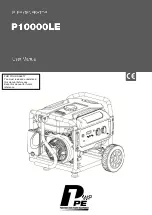
37
frequency is lower than the switching frequency 1 (F2-02), while the parameters of F2-03 and F2-04
refer to the PI adjustment parameters when the running frequency is higher than the switching
frequency 2 (F2-05). The PI adjustment parameter between the switching frequency 1 and switching
frequency 2 refers to the linear switching between two sets of PI parameters. It is as shown in the
figure below:
PI Parameters
Switching frequency 1
Switching frequency 2
Frequency command
PI Parameters
Switching frequency 1
Switching frequency 2
Frequency command
Fig. 6-1 PI Parameters Schematic Diagram
We can regulate the speed dynamic response characteristic of the vector control by setting the
proportional coefficient and integration time of the speed regulator. The dynamic response of the
speed loop can be accelerated by increasing the proportional gain or decreasing the integration
time. Excessive proportional gain or too small integration time will cause the system to vibrate.
Perform fine tuning if the factory parameters cannot fulfill the requirements: increase the
proportional gain first to prevent the system from vibrating and reduce the integration time to ensure
the system has fast response characteristic and the overshoot is small.
Note:
If the Pl parameters are set inappropriately, it will cause large overshoot speed or even
voltage fault when it returns from the overshoot to the normal level.
F2-06
Slip compensation coefficient of vector
control
Default 100%
Setting range
50% ~ 200%
This parameter is effective for sensorless vector control mode and can be used to regulate the
steady speed precision. Increase the parameter when the motor speed is obviously lower than the
setup frequency after load is applied to the motor. Reduce the parameter when the motor speed is
higher than the setup frequency after load is applied to the motor.
















































